Author: Ansel Lindner, Forbes; Compiler: Tao Zhu, Golden Finance
Overall, the launch of the spot Bitcoin exchange-traded fund (ETF) was the most successful ETF debut in history. Several key milestones stand out: No other ETF has experienced $3 billion in inflows in its first month, while Bitcoin has two - BlackRock's IBIT and Fidelity's FBTC. All in all, Bitcoin ETFs attracted an impressive $17 billion in inflows in their first nine months, breaking the previous record of $13 billion for the entire year1. IBIT also achieved another milestone, maintaining the 10th longest inflow streak on record, with 71 consecutive days of positive inflows since its launch.
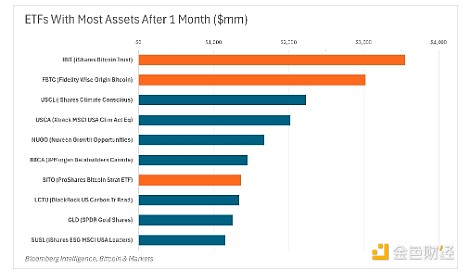
This record period demonstrates the importance of Bitcoin ETFs and their unique ability to generate large inflows into financial assets. Although inflows have slowed in recent months, they still outstrip Bitcoin's price action. Even though Bitcoin's price has been consolidating within a descending channel since March, inflows have continued to increase.

Bitcoin ETF cumulative inflows continue to rise, and prices have fallen slightly
The divergence between fund flows and prices may provide important insights into understanding this consolidation period and future price trends. First, it suggests that ETF buyers are relatively insensitive to prices and continue to accumulate positions despite price declines. Second, these investors are less likely to sell in a panic, which may buffer downside risks during adjustments. Third, market corrections can occur through sharp price declines or prolonged consolidation, and ETF holders appear to be steering Bitcoin toward the latter, extending periods of stability. Finally, while inflows tend to correlate with price increases, the steady accumulation of funds can build pressure, gradually pushing Bitcoin through key resistance levels.
This week, Bitcoin prices broke through one of these key resistance levels, hitting an 8-week high and its first higher high since March. The move sparked excitement about a potential year-end rally.
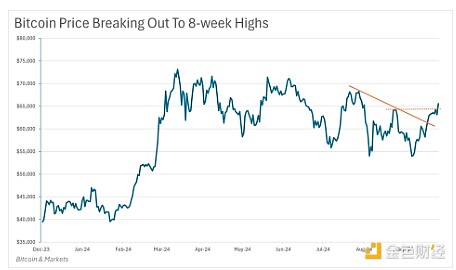
Bitcoin breaks lows and hits 8-week high
Bitcoin ETFs are changing Bitcoin's fundamentals. As the most successful ETFs ever, they set the stage for Bitcoin's explosive growth in the fourth quarter.
Bitcoin enters the fourth quarter, influenced by numerous bullish catalysts
Historically, the fourth quarter is the most bullish period for Bitcoin, with an average return of 88.8%. This trend is more pronounced in halving years, such as 2016 and 2020, when fourth-quarter returns averaged as high as 113%.
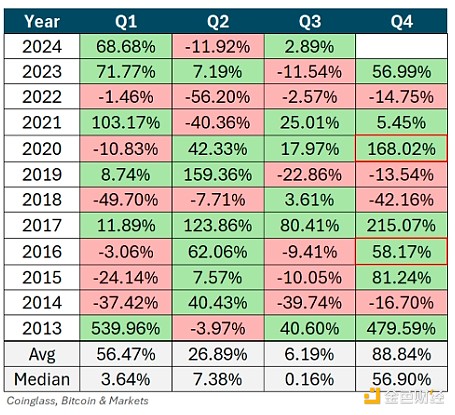
Historically, the fourth quarter has been very favorable for Bitcoin prices, especially in halving years.
As we enter the fourth quarter, Bitcoin is expected to benefit from multiple positive factors beyond ETF inflows. Last week, the SEC approved IBIT options trading months ahead of schedule, the first time a spot Bitcoin ETF has received such approval. The options, which will be listed on the Nasdaq ISE, are expected to attract more investors by providing more ways to gain exposure to Bitcoin. While the options will require further regulatory approval before they are officially available, market analysts such as Eric Balchunas, senior ETF analyst at Bloomberg, are optimistic. Balchunas wrote on X: "Bitcoin ETF wins big (as it will attract more liquidity and, in turn, more big fish)."
The ongoing FTX bankruptcy proceedings are expected to inject a large amount of capital into the market in the fourth quarter, further strengthening the optimistic outlook.Creditor distributions are expected to begin in early October and could total up to $16 billion. Rumors of an immediate payout on October 1 remain speculative, however, their latest press release confirms that the final vote will be announced on October 7, 2024, prior to the confirmation hearing. With over 95% of voting creditors giving strong initial support to FTX’s revised restructuring plan, the plan seeks to return 100% of bankruptcy claims. These payouts are made in U.S. dollars, and a large portion is expected to flow back into the market, with Bitcoin likely to receive the largest share.
Fed Rate Cuts and Global Central Bank Easing
These catalysts for Bitcoin coincide with another major development – the first rate cut by the Federal Reserve since March 2020. Last week, the Federal Reserve cut interest rates by 50 basis points at the September FOMC meeting, marking a major shift in monetary policy toward a more accommodative approach.
The Fed’s rate cuts are part of a broader trend. Other central banks, including the European Central Bank, the Swiss National Bank, and the Bank of Canada, have also begun cutting rates. Interestingly, the People’s Bank of China has also initiated rate cuts and massive economic stimulus, although it has not participated in coordinated tightening elsewhere. This raises the question: will we end up in the same economic situation regardless of central bank actions? This may be a discussion for a future article.
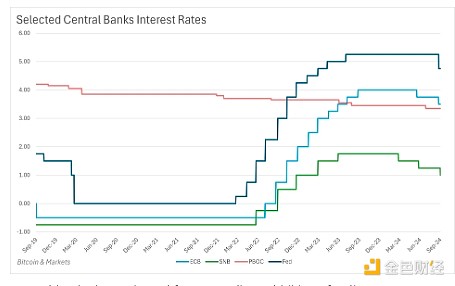
Nevertheless, the central bank’s shift to rate cuts adds fuel to Bitcoin in the medium term. This coincides with an increase in the global M2 money supply, further fueling risk appetite. While central bank rate cuts typically reflect worsening macroeconomic conditions, they can boost markets in the short term by creating a more favorable environment for risk assets. We have already seen global M2 break new highs.
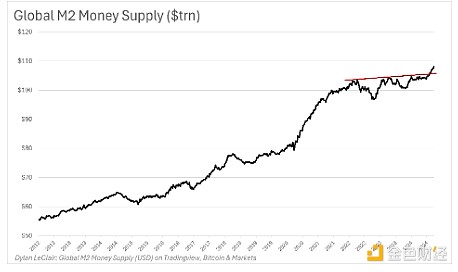
As we enter the fourth quarter, Bitcoin is at the crossroads of several powerful market forces. Historical trends show that Bitcoin performs strongly in the last quarter, especially during the halving cycle. This time around, regulatory progress, potential capital inflows from the FTX distribution, and looser global monetary policy have further boosted Bitcoin. Taken together, these factors suggest that Bitcoin ETFs could gain renewed momentum and potentially see record inflows by year end. As price action begins to align with ETF flows, conditions are ripe for a highly bullish end to 2024 for Bitcoin.
 JinseFinance
JinseFinance
 JinseFinance
JinseFinance JinseFinance
JinseFinance JinseFinance
JinseFinance Xu Lin
Xu Lin Coindesk
Coindesk 链向资讯
链向资讯 Nulltx
Nulltx 链向资讯
链向资讯 链向资讯
链向资讯 Cointelegraph
Cointelegraph